First:
create a custom
UITabBarController as follows:
import UIKit
enum TabbarItemTag: Int {
case firstViewController = 101
case secondViewConroller = 102
}
class CustomTabBarController: UITabBarController {
var firstTabbarItemImageView: UIImageView!
var secondTabbarItemImageView: UIImageView!
override func viewDidLoad() {
super.viewDidLoad()
let firstItemView = tabBar.subviews.first!
firstTabbarItemImageView = firstItemView.subviews.first as? UIImageView
firstTabbarItemImageView.contentMode = .center
let secondItemView = self.tabBar.subviews[1]
self.secondTabbarItemImageView = secondItemView.subviews.first as? UIImageView
self.secondTabbarItemImageView.contentMode = .center
}
private func animate(_ imageView: UIImageView) {
UIView.animate(withDuration: 0.1, animations: {
imageView.transform = CGAffineTransform(scaleX: 1.25, y: 1.25)
}) { _ in
UIView.animate(withDuration: 0.25, delay: 0.0, usingSpringWithDamping: 0.5, initialSpringVelocity: 3.0, options: .curveEaseInOut, animations: {
imageView.transform = CGAffineTransform(scaleX: 1.0, y: 1.0)
}, completion: nil)
}
}
override func tabBar(_ tabBar: UITabBar, didSelect item: UITabBarItem) {
guard let tabbarItemTag = TabbarItemTag(rawValue: item.tag) else {
return
}
switch tabbarItemTag {
case .firstViewController:
animate(firstTabbarItemImageView)
case .secondViewConroller:
animate(secondTabbarItemImageView)
}
}
}
Second:
Set the
tag values for the
tabBarItem for each view controller:
First ViewController:
import UIKit
class FirstViewController: UIViewController {
override func viewDidLoad() {
super.viewDidLoad()
tabBarItem.tag = TabbarItemTag.firstViewController.rawValue
}
}
Second ViewController:
import UIKit
class SecondViewController: UIViewController {
override func viewDidLoad() {
super.viewDidLoad()
tabBarItem.tag = TabbarItemTag.secondViewConroller.rawValue
}
}
Make sure that everything has been setup with your storyboard (if you are using one) and that's pretty much it!
Output:

You could check the repo:
https://github.com/AhmadFayyas/Animated-TabbarItem/tree/master
for demonstrating the answer.
